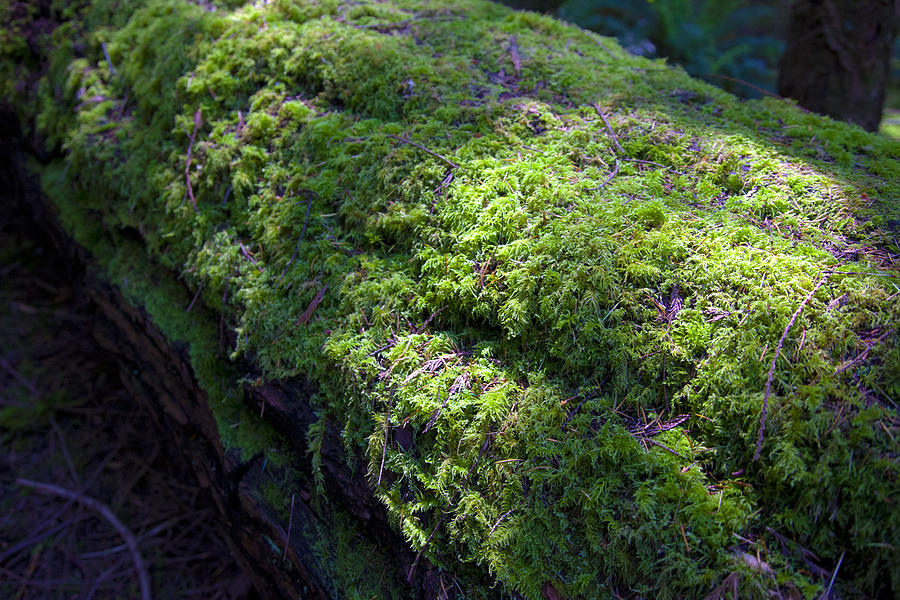Mosses are like sponges.
No, really they are.
In this article, we are going to be talking about the physics of how exactly mosses are like sponges. Mind-blowing, right?

Mosses are a part of a plant group called bryophytes that include other plants like liverworts and hornworts. Bryophytes are an early plant group on the evolutionary tree of plants and they work a bit differently than the complex flowering plants that dominate the plant world today.
Plants are believed to have come from a freshwater origin, and when they first colonized land their first concern would have been developing mechanisms that would help them survive without having a water constantly surrounding them.1 Bryophytes give us a peek into how plants first started this evolutionary process.
So moving onto land wasn’t as easy as it sounds. There was an extremely high risk of plants dying out due to drying out or what’s called desiccation. Many modern day plants especially flowering plants developed a nifty system to help transport water throughout their entire body but plants didn’t just have this feature from the start.2 Bryophytes don’t have this feature but fear not, they had their own trick up their sleeve.
TOLERANCE VS AVOIDANCE! DESICCATION SURVIVAL SMACKDOWN
Ok, so it’s not actually as extreme as it sounds. Evolution isn’t really a contest to see who’s better or not. Just because mosses are considered to have “primitive” features doesn’t mean that vascular plants, which have a more complex structure, are better at surviving. So really we’re just going to examine the differences between desiccation tolerance and desiccation avoidance.
So most modern day plants use desiccation avoidance which means that they have mechanisms that help them avoid desiccation.3 These plants wouldn’t be able to survive through desiccation so they just evolved to make sure that they don’t go through desiccation. They are essentially dodging a bullet.
Bryophytes ,on the other hand, are desiccation tolerant which means that they have mechanisms that help them survive through desiccation.3 These plants run headlong into desiccation and endure it. Moss are boss!
So desiccation tolerance is cool and all but how do they do it? Well, I’m pretty sure, I mentioned a sponge analogy earlier and that seems like a pretty good place to start. When you leave a sponge out, it gets really dry and hard. But once you add some water it becomes larger, squishy and wet. If you leave the sponge out again, it will again return to a dry and hard state. That’s how moss works. Generally. But to understand how this works mechanically, we gotta use physics.
BUT WHAT DOES PHYSICS HAVE TO DO WITH ANYTHING?
A whole lot. And to understand how mosses work, we need to understand how water works. Water has physical properties such as cohesion and adhesion. Cohesion is when the water molecules are attracted to other water molecules and adhesion is when water molecules are attracted to other molecules like the surface of glass. Another important phenomenon that happens that relates to cohesive and adhesive forces is capillary action. Capillary action is the tendency of a fluid to be raised or suppressed in a narrow tube. Both the cohesive/adhesive properties and capillary action make up the physics of water uptake in mosses.4
If this is new knowledge to you, here’s a quick crash course if you want further information on the physical properties of water.
Instead of through the roots, water uptake happens across the moss surface which is where the adhesive property of water comes into play. When the water is absorbed through the surface, the actual movement of the water is facilitated by capillary action. The water is then taken from the surface and into the plant via this method. Once inside, the water is transported through the cells via diffusion.3
Because of its ability to quickly re-hydrate after a period of desiccation, moss has been referred to as a type of “resurrection plant”. There has even been talk of scientists using this unique feature in order to create crops that can withstand dry periods.
MOSS BUDDIES: THE COOL CRITTERS THAT LIVE IN MOSS
By the way, did you know that mosses and other bryophytes aren’t the only ones that are desiccation tolerant! It just so happens that some cute microscopic critters that live in moss are also in on the fun. And one of these critters is called a rotifer! Rotifers collect food from the water that that is being uptaken by the moss and even more interesting is that when the moss go through dry periods, the rotifers are inactive! This is known as cryptobiosis which refers to the state of an organism when it shows no visible sign of life. This means the rotifer’s productivity correlates with the productivity of the moss!5 For information on this, there’s a link below.
SO WHY DOES IT MATTER?
So mosses are like sponges. But what does this have to do with anything? The physics of how desiccation in moss works is useful because then we can understand the mechanics of what we are seeing and also have a better understanding of the physiology of mosses.
Also, it’s kind of a cool party trick.

